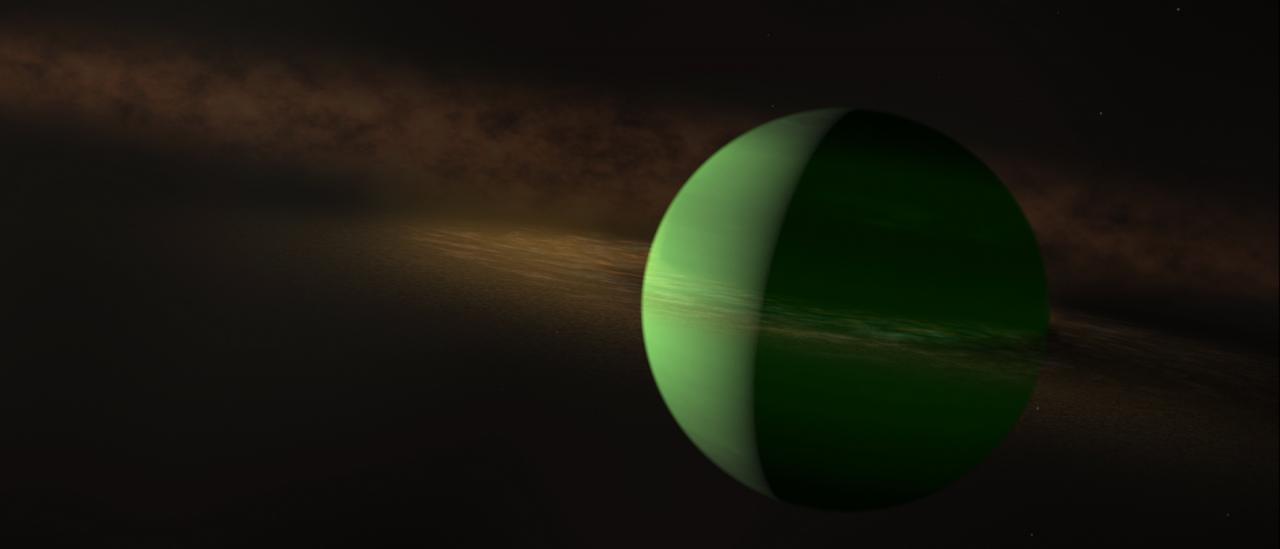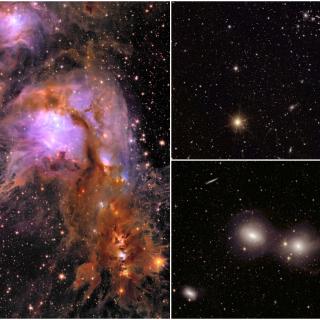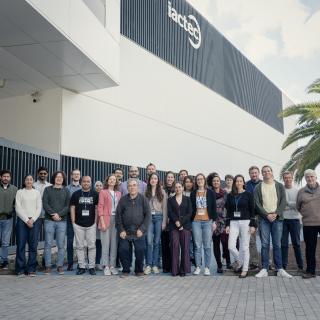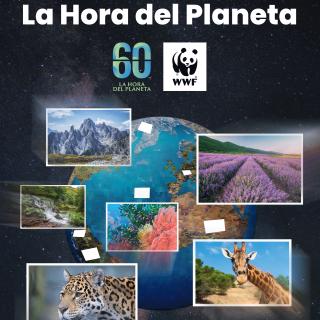An international team of scientists, with the participation of the Instituto de Astrofísica de Canarias (IAC), has discovered a planet of the size of Neptune orbiting in rather more than a week around AU Microscopii, a young star a little over of 30 light years away, and surrounded by a disc of debris left over from its formation. The data were obtained with NASA’s Transiting Exoplanet Survey Satellite (TESS) and the Spitzer Space Telescope (now retired from service). The Discovery is published today in Nature magazine.
The finding in this system, abbreviated as AU Mic, will be a unique laboratory for studying how the planets and their atmospheres form, evolve and interact with their stars.
“AU Mic is an M dwarf star, very young and nearby. It is surrounded by a large disc of rubble in which clusters of moving dust have been detected, and now, thanks to TESS and Spitzer, we know that it also has a planet, whose size has been measured directly” -explain Peter Playchan, Assistant Professor of Physics and Astronomy at George Mason University, Fairfax, Virginia, and first author of the article, and Bryson Cale, a doctoral student at George Mason.
“The discovery of a planet in a system which is so near, and above all so young, such as AU Mic, makes it a reference laboratory for understanding the earliest phases in the formation and evolution of stars and planets, a field which will be deeply studied in the coming decades” says Enric Pallé, a researcher at the IAC, a coauthor of the Discovery article, and first author of a second article which studies the architecture of this system and the atmosphere of AU Mic b, using the ESPRESSO instrument on ESO’s Very Large Telescope (VLT).
A system in the constellation of Microscopium
AU Mic is a cool red dwarf star, with an age estimated at 20 to 20 million years, which makes it a “baby star” compared to the Sun which is at least 150 times older. The star is so young that its main source of luminosity is the energy generated as it compresses due to its own gravity. Less than 10% of the energy of the star comes form the fusion of hydrogen to helium in its core, the process which feeds stars like our Sun.
The system is at 31.9 light years away from us, in the southern sky in constellation of Microscopium. It is part of a nearby set of stars in the so-called Beta Pictoris moving group, which takes its name fom an A-type star which is bigger and hotter, hosts two planets, and is also surrounding by a debris disc.
A challenging detection
Detecting planets around stars like AU Mic presents a considerable challenge. These stars have strong magnetic fields, and may be covered in star spots (cooler regions which are darker than their surroundings, and highly magnetic, similar to sunspots), which often produce strong eruptions and stellar flares. Both the spots themselves and their outbursts contribute to the changes in brightness of the star. In July and August 2018, while TESS was observing AU Mic, the star produced many eruptions, some of which were more powerful than the strongest every recorded on the Sun. The team had to make a very detailed analysis of the light curves to eliminate these effects from the TESS data.
When a planet passes in front of the star from our perspective, an event called a transit, its passage produces a clear reduction in the brightness of the star. “As well as observing with TESS, our team was granted observing time with Spitzer, which caught two additional transits in 2019 and allowed us to confirm the orbital period of AU Mic b” explains Diana Dragomir, Assistant Research Professor at the University of New Mexico, in Albuquerque.
Because the amount of light blocked during a transit depends on the size of the planet and its orbital distance from the star, the transits measured by TESS and Spitzer gave a direct measurement of the size of AU Mic b. Analysis of these measurements show that the planet is about 8% bigger than Neptune.
Observations with instruments on ground-based telescopes give upper limits to the mass of the planet. When a planet follows an orbit, its gravity pulls on its host star, which moves a little in response. Sensitive instruments on big telescopes can detect the variation in the radial velocity of the star, its movement to and for along our line of sight. Combining observations from the W.M. Keck Observatory and NASA’s infrared telescope in Hawaii, together with those from the European Southern Observatory in Chile, the team concluded that AU Mic b has a mass some 58 times bigger than that of the Earth.
“There is another possible planet candidate around AU Mic in the TESS data, and we hope that TESS will revisit AU Mic at the end of this year, during its extended mission, so we will continue to monitor the star with precise measurements of radial velocity to confirm if it has a second transiting planet”, concluded Plavchan.
TESS is a mission of NASA’s Astrophysics Explorer class, run and operated for the MIT in Cambridge, Massachussetts, and administered by NASA’s Goddard Space Flight Center. Additional associates include Northrop Grummann, with headquarters in Falls Church, Virginia; NASA Ames Research Centre in Silicon Valley, California; the Harvard-Smithsonian Center for Astrophysics in Cambridge, Massachussetts; the Lincoln Laboratory of MIT; and the Space Telescope Science Institute, in Baltimore, Maryland. More than a dozen universities, research institutes and observatories from around the world are participating in the mission.
First article: Peter Plavchan, et al: “A planet within the debris disk around the pre-main-sequence star AU Microscopii”, Nature, 2020. DOI: https://www.nature.com/articles/s41586-020-2400-z
Second article: Pallé et al, “Transmission spectroscopy and Rossiter-McLaughlin measurements of the young Neptune orbiting AU Mic”, Astronomy & Astrophysics, June 11, 2020. Arxiv: https://arxiv.org/pdf/2006.13609.pdf
Other researchers at the IAC who participated in the second article characterising AU Mic b are Mahmoud Oshagh, Nuria Casasayas-Barris, Monika Stangret and Rafael Luque.
Contact at the IAC:
- Enric Pallé: epalle [at] iac.es (epalle[at]iac[dot]es)
Complementary material:
- AU Mic b “Galaxy of Horrors” poster: https://exoplanets.nasa.gov/resources/2237/flares-of-fury-poster/
- Nasa Feature: https://www.nasa.gov/feature/goddard/2020/nasa-s-tess-spitzer-missions-discover-a-world-orbiting-a-unique-young-star
- YouTube video: https://www.youtube.com/watch?v=u7VnZL5wJfk
- SVS (supplemental graphics): https://svs.gsfc.nasa.gov/13648




